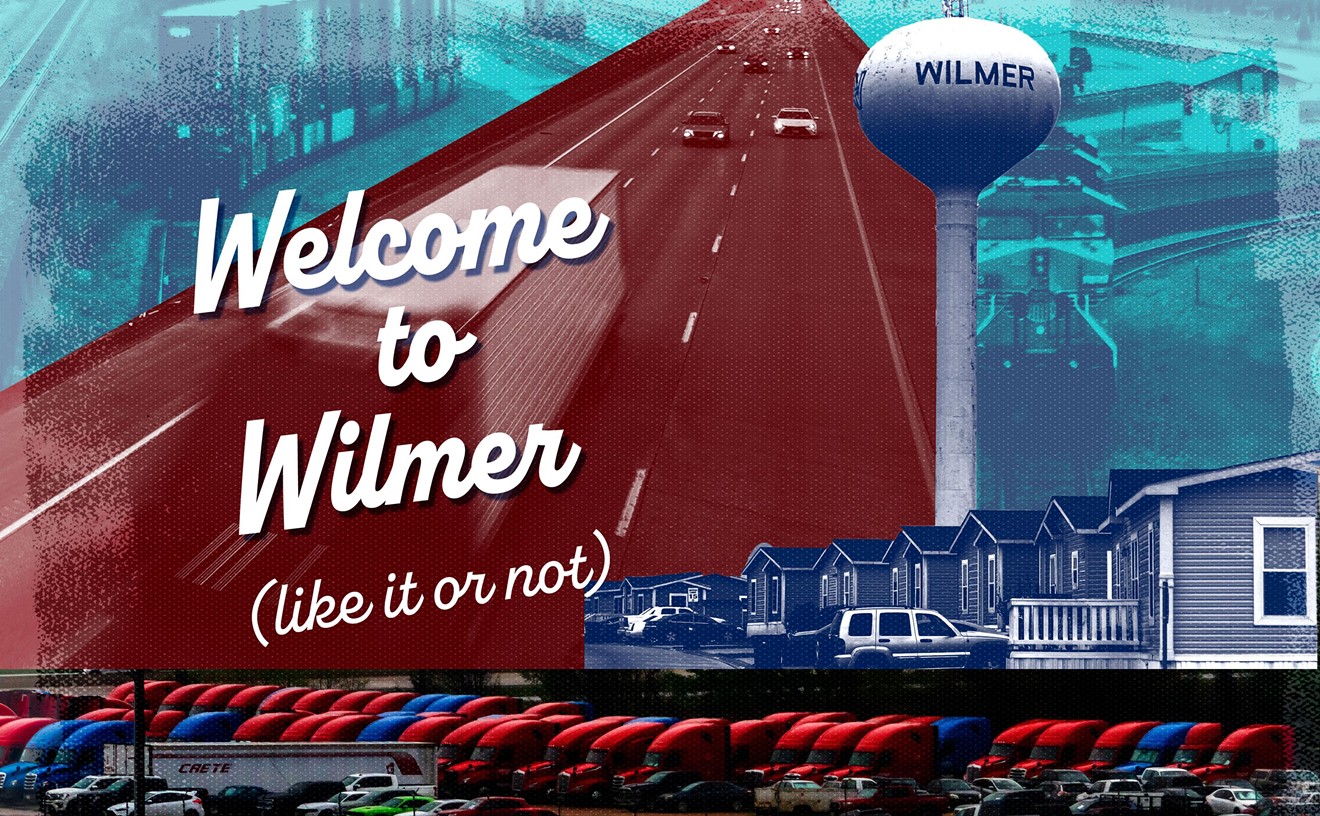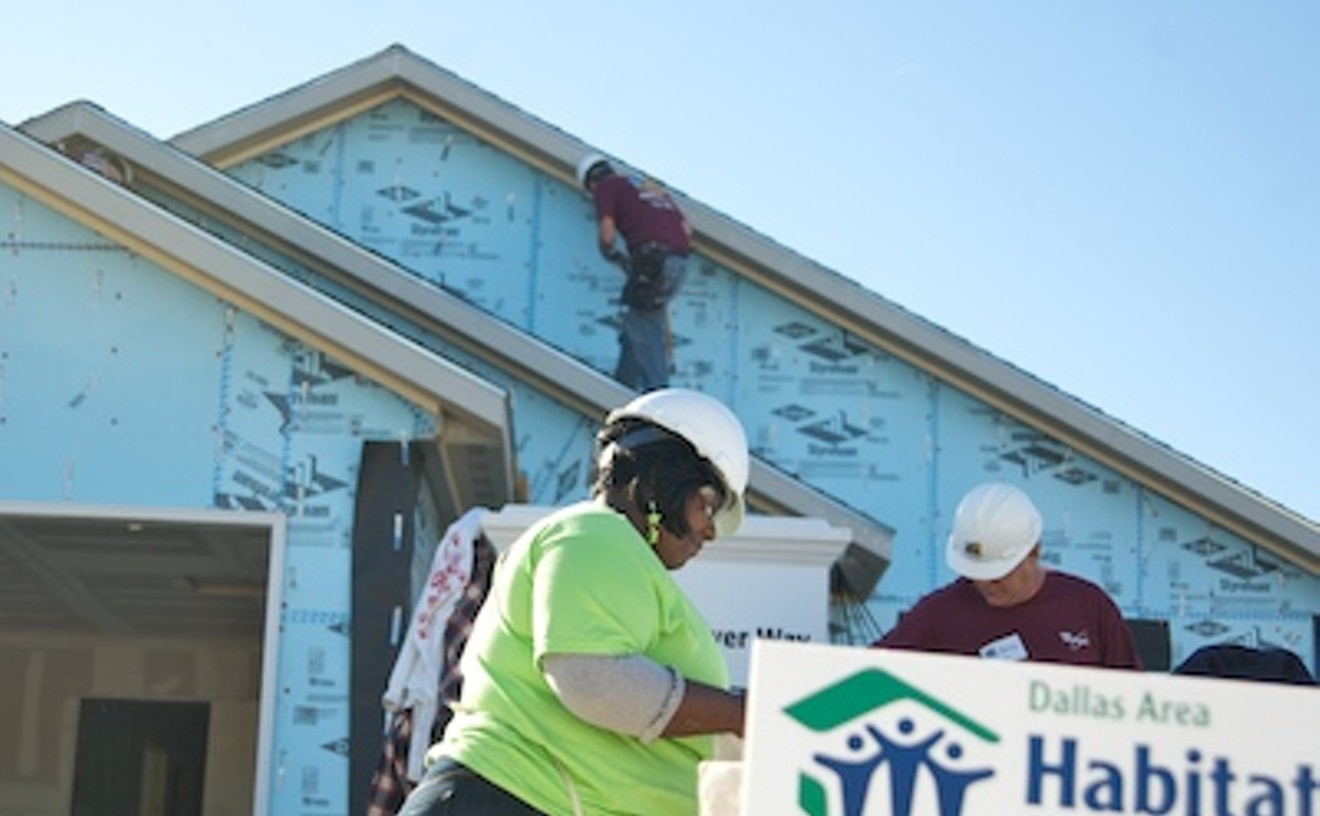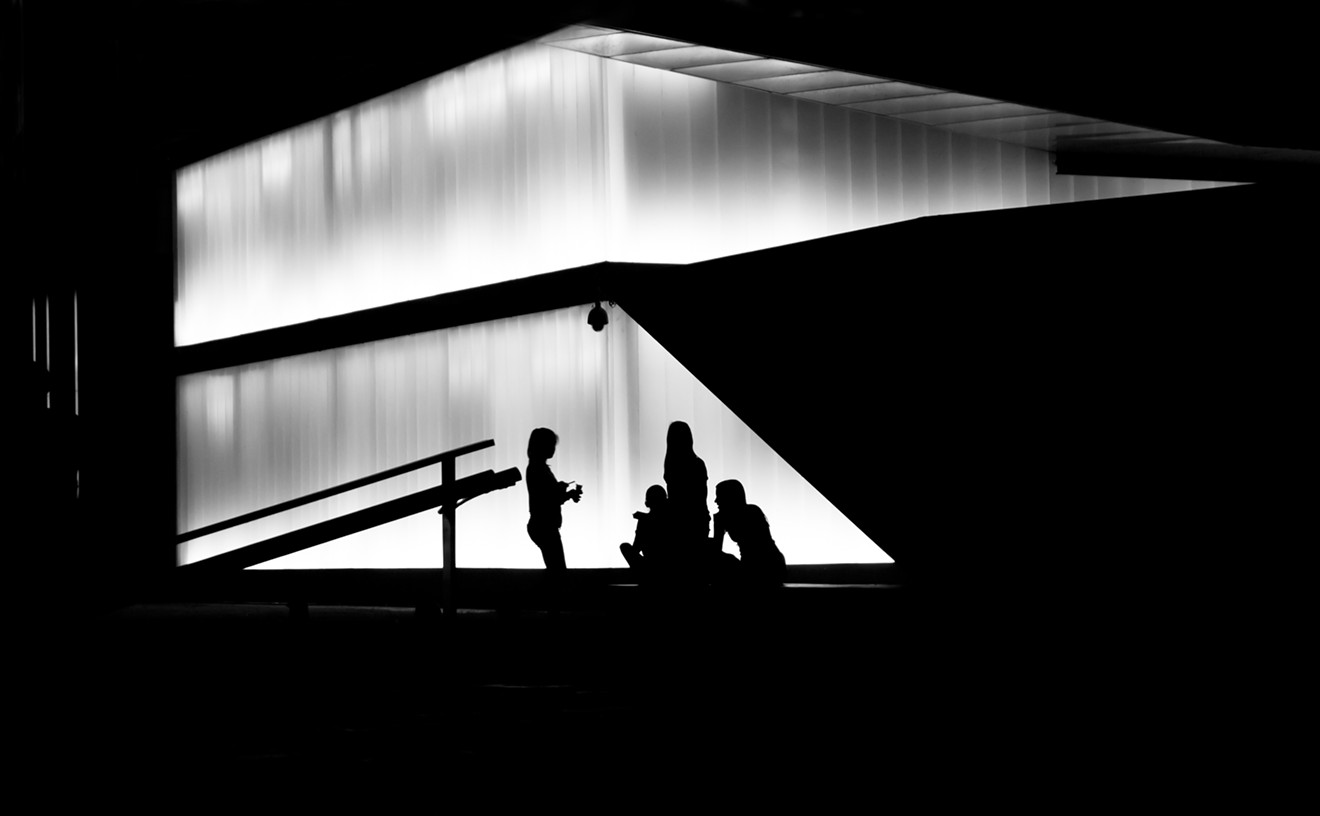Dallas ISD's Bonham Elementary was a gem. The school reliably received an exemplary rating from the Texas Education Agency plus an impressive number of accolades for one of DISD's workaday neighborhood schools. In 2009, it was one of 11 campuses nationwide to receive a National Excellence in Urban Education Award. In 2010, the U.S. Department of Education named it a Blue Ribbon School, one of two dozen Texas schools so designated. The school's academic success, in turn, was undergirded by strong community support and an uncommonly dedicated cadre of parents and school staff.
But Bonham is on Henderson Avenue, a couple of blocks from the stretch of formerly dilapidated commercial buildings the Andres Brothers have transformed over the past two decades into a lively and eclectic mix of locally owned boutiques and restaurants. Accompanying Knox/Henderson's emergence as a shopping-and-nightlife destination were parallel changes to the residential neighborhood that surrounded it. Trendy new apartments replaced dilapidated old ones. The 1920s-era cottages of Vickery Place started changing hands and being spruced up or replaced with lavish new homes. Property values surged.
Put another way, the area around Bonham Elementary was gentrifying, even if the area's slightly above-median income in 2000 kept it out of the Observer's recent analysis of gentrifying neighborhoods. On balance, the resurgence of the surrounding neighborhoods has been an undeniable positive for the city, increasing the tax base and lowering crime rates. But for Bonham Elementary, and for schools in neighborhoods that have undergone similar transformations, there was a catch: The people who were moving into the neighborhood tended to have a lot more money but a lot fewer kids.
In 1990, in the two census tracts that include Vickery Place and Knox Henderson and line up roughly with Bonham Elementary feeder pattern, the median income was about $21,000. In 2010 it was triple that, around $63,000. (Taking inflation into account, the median income increased by about 80 percent.) The neighborhoods' median home value in 2010 was upward of a quarter of a million dollars, double the citywide median. The population shrank somewhat between 1990 and 2010, dropping from 4,564 to 3,806, but the population of children under 18 was cut in half, from 1,187 to 580. Bonham's student population plummeted as well. Presumably, some of the neighborhood's more recent arrivals enrolled their kids in private school. By the 2011-12 school year, Bonham had a bit more than 200 students. When DISD trustees, facing a budget crunch caused largely by a sharp reduction in state funding, decided to close 11 underpopulated schools, Bonham made this list.
The decision to close Bonham wasn't quite as simple as all that. According to reporting at the time, DISD picked relatively high-performing elementary schools like Bonham to avoid jeopardizing federal funds by closing lower-performing campuses. Dave Walkington, who had kids at the school and whose wife was the PTA president, suspects that trustees picked Bonham to make a political point, to show the Legislature that its budget cuts were forcing them to close top-notch schools. Still, there was no ignoring the fact that the demographic shifts in Bonham's attendance zones left the campus badly underused.
DISD's finances today are comparatively rosy. The district is planning to build new schools and renovate old ones as part of a $1.6 billion bond package before voters, not shut them down. Even Bonham is about to get new life next year as an all-girls STEAM (i.e. science, technology, engineering, arts and mathematics) school. But that's hardly going to repair the injury to the community caused by the school's closure, and the bond package isn't going to repopulate campuses in gentrifying neighborhoods that are now hemorrhaging students the way Bonham was a decade ago.
Ground zero, perhaps, is Oak Lawn's century-old Sam Houston Elementary, which sits a couple of blocks off Cedar Springs Road, right in the Observer's backyard. Since 2000, the area's median income has skyrocketed as aging apartments have been razed to make way for new, high-end complexes and townhouses. But while the young professional types who have been moving into the area have brought with them lots of dogs (as evidenced by the frequency with which pedestrians must detour around the owners of peeing canines), they do not typically have kids. According to census data, the neighborhood had 588 children between the ages of 5 and 14 in 2000. In 2013, according to the Census Bureau's American Community Survey, it had about 171. And so, while the area now supports an incredible variety of high-end canine services (including three dog "spas" — the Pooch Patio, Lucca Bella Doggie Spa & Boutique and the Dog Lofts — along a quarter-mile stretch of Oak Lawn), Sam Houston is hurting for students. Just four years ago it had 302, according to Texas Education Agency records. DISD statistics for the current school year put enrollment at 201, lower than Bonham's when it closed.
Sam Houston, by most measures, is an excellent school. In 2014-15, it crushed its performance targets despite having a student body that was 95 percent economically disadvantaged and 68 percent English-language learners. The data suggest that the kids whose families live in the aging apartments that still pockmark the area are getting a really good education. At a certain point, however, probably around the spot where Sam Houston's enrollment has dropped to, a campus' continued existence as a traditional neighborhood school becomes untenable. In pretty much any district, particularly one where many schools are bursting at the seems and that is lobbying for a billion-and-a-half dollars to build and expand a bunch of campuses, it just doesn't make sense for a school to operate at half capacity.
That doesn't mean that underutilized schools should be shut down. "The modus operandi of DISD in the past is you identify schools that have declining enrollment and you close them," says trustee Miguel Solis, whose district includes Sam Houston. That's a sound financial strategy, Solis says, but "the problem with that approach is that if you close [a] school, you kill the community." Mike Koprowski, who runs the district's office of transformation and innovation, agrees. Among district officials, there is absolutely "no appetite for closing schools," he says. Partly, Koprowski says, that's because they've recognized the scars the 2011 closures left on the surrounding communities, and partly it's a reflection of a more fundamental — if still relatively limited — shift in the district zeitgeist when it comes to the relationship between schools and neighborhoods.
There's also no appetite for redrawing campus attendance zones, as opponents of the bond package and The Dallas Morning News have floated as an alternative to large-scale capital improvements. Even broaching the subject is like throwing a grenade in the middle of places like Lakewood, which are fiercely protective of their successful but carefully gerrymandered neighborhood schools. Beyond the politics, rejiggering attendance zones does nothing to address economic segregation, which, in contrast to a handful of half-empty schools, is a tremendous structural problem that all but guarantees poor outcomes for kids living in areas of concentrated poverty. Mountains of research have shown that poor kids do better when they're learning alongside wealthier peers.
And so, DISD is pursuing a third way: so-called "schools of choice." Like magnets, choice schools offer specialized programs (e.g. Montessori, STEAM) and aren't bound by traditional attendance zones. As such, they can sometimes exacerbate inequity within a district. Journalist Nikole Hannah-Jones of ProPublica has described schools of choice as a "Faustian bargain" districts strike with gentrifiers, allowing them to move into inner-city neighborhoods without having to also buy into the low-income neighborhood school, which suffers as a result. It's a modern version of the socioeconomic sorting that's been going on since desegregation. DISD's choice schools, however, very pointedly don't have academic entry requirements, allowing officials to design enrollment criteria with an eye toward creating a mix of incomes and abilities.
That's what happened with Mata Montessori, which Mohammed Choudhury, Koprowski's lieutenant in the innovation/transformation office, refers to as DISD's "O.G. choice school." (Full disclosure: My wife teaches at the school and my son is a first-grader there, and we think it's awesome.) The school, on Grand Avenue just south of White Rock Lake, originally opened in 1997 with some 600 students in grades 4 through 6. Enrollment dropped precipitously when J.L. Long Middle School absorbed Mata's sixth-graders in 2007 and sunk further still when Lipscomb siphoned off some of its fourth-graders in 2008. By 2013, enrollment was in the 200s and the school was two-thirds empty.
In fall 2014, Mata reopened as a choice campus with a Montessori focus. In contrast to the district's existing Montessori schools, Harry Stone and Dealey, which are magnets with Harvard-like acceptance rates (there's nothing quite so crushing as a getting a rejection letter informing you that your 3-year-old's just not Dealey material), Mata's enrollment was filtered based on geography. Top priority went to students zoned for Mount Auburn Elementary, which is predominately low-income and almost entirely Hispanic. Kids in the Woodrow Wilson feeder pattern were next. Last came families in the district's other feeder patterns. The result is a healthy-seeming racial and socioeconomic mix. It's pulled a couple of dozen kids zoned for overburdened Lakewood Elementary and some from other high-income neighborhoods, but not so many that Mata's become anything close to the type of elite, affluent-only choice schools Hannah-Jones wrote about.
DISD is testing other ways to structure enrollment to strike a healthy balance. Two choice campuses that opened this year — the Innovation, Design, Entrepreneurship Academy at James Fannin on Ross Avenue and D.A. Hulcy STEAM Middle School in Southwest Dallas (both were closed as part of the 2011 budget cuts) — each gives priority to families within a certain radius of the school. Fannin's radius is three miles, which is big enough to encompass both Uptown and Fair Park. Bonham will do away with geographic considerations altogether when it reopens as an all-girls STEAM academy next fall, reserving half the seats for low-income students and the other half for families with higher incomes. (Koprowski's office eschews the traditional binary free-and-reduced lunch measure for assessing poverty in favor of a four-tiered formula based on neighborhoods' median income, adult educational attainment, homeownership rate and prevalence of single-parent households.) This is a form of social engineering, Korprowski admits, but so is basing a kid's school on the economically homogeneous neighborhood he lives in. At least this way the district can work to ameliorate some of the corrosive effect of Dallas' stark residential segregation. "You're engineering it one way or another," he says.
With a robust enough network of choice schools, DISD should also be able to offset some of the other detrimental effects gentrification often has on education. On the one hand, families can opt out of public schools entirely in favor of private schools or charters. Choudhury is from Los Angeles, where families in the fully gentrified downtown area formed their own charter school rather than send their kids to the schools in the neighborhood. Build an attractive enough school system with enough built-in choice and the newcomers are more likely to buy in. On the other extreme, a school can rapidly flip from low- to high-income as the surrounding neighborhood is colonized by affluent families. The boost in achievement that inevitably results from the influx of higher-income kids looks great on paper, but it's not necessarily a sign of pedagogical improvement. Often, the lower-income kids are simply being displaced and pushed into other low-income schools. Koprowski's goal with choice schools is to be able to freeze a healthy amount of diversity in place.
So where does that leave a school like Sam Houston? Or Ben Milam Elementary on Fitzhugh, which is now surrounded by high-end apartments and townhouses? Or Bonham's neighbor on Henderson, John F. Kennedy Learning Center, where enrollment has decreased from more than 648 five years ago to 412 this year?
Solis, the trustee, sees such campuses as prime targets for school choice. The shape those schools would take — whether they'd be Montessori, dual-language or something else, or if they remain a normal neighborhood school — depends on the wants and needs of parents and campus leadership. DISD has two models for choice schools. So-called transformation schools — vacant campuses like Bonham or entirely new schools like the choice schools proposed as part of the 2015 bond — are the product of a competitive bid process that last application cycle was limited to DISD employees but this year is entertaining proposals from educators across the country. Innovation schools — i.e. new programs at existing schools like the Bryan Adams High School Leadership Academy and the personalized learning programs at Cabell and Rogers elementaries and Marsh Middle School — can only be proposed by that school's administration after significant engagement with parents and the community. Innovation schools retain their attendance zones and neighborhood character.
"The hardest part about schools of choice, at least what I've seen in trying to be a champion for it, is not getting ahead of the community that is dealing with the school already," Solis says. "That's where it's tough. You've gotta lay the groundwork and you can't force it on people, but when you get it right like we've done at Mata and at [Robert E.] Lee (which has seen increased buy-in from its affluent East Dallas neighborhood since it added an International Baccalaureate program), you can really do some great things. Without it being a divisive issue, you can create a new culture at those schools and you can reinvigorate a [campus]."
This article initially reversed the description of transformation and innovation schools. Transformation schools are new campuses and new programs at vacant campuses. Innovation schools are new programs at existing campuses.
[
{
"name": "Air - MediumRectangle - Inline Content - Mobile Display Size",
"component": "18855504",
"insertPoint": "2",
"requiredCountToDisplay": "2"
},{
"name": "Editor Picks",
"component": "17105533",
"insertPoint": "4",
"requiredCountToDisplay": "1"
},{
"name": "Inline Links",
"component": "18349797",
"insertPoint": "8th",
"startingPoint": 8,
"requiredCountToDisplay": "7",
"maxInsertions": 25
},{
"name": "Air - MediumRectangle - Combo - Inline Content",
"component": "17105532",
"insertPoint": "8th",
"startingPoint": 8,
"requiredCountToDisplay": "7",
"maxInsertions": 25
},{
"name": "Inline Links",
"component": "18349797",
"insertPoint": "8th",
"startingPoint": 12,
"requiredCountToDisplay": "11",
"maxInsertions": 25
},{
"name": "Air - Leaderboard Tower - Combo - Inline Content",
"component": "17105535",
"insertPoint": "8th",
"startingPoint": 12,
"requiredCountToDisplay": "11",
"maxInsertions": 25
}
]










